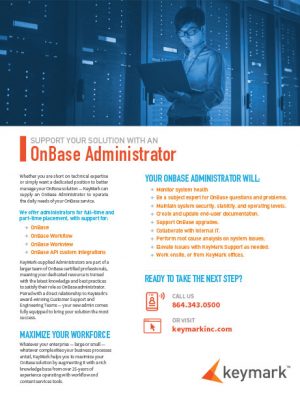Supply chain and logistics lies at the epicenter of our globalized lives, and unless a second dark age is in the cards, that won’t change. Even still, the industry and its major players, including cargo movers, owners, and regulators, stares down similar problems felt in industries nationwide.
Do these major supply chain and logistics market issues sound familiar?
Natural disasters, trade conflicts, resource shortages, you name it, things that are out of our control continue to contribute to increased delays and rising costs.
The people you serve and the people they serve all expect the same fast, reliable, and highly visible service.
The same as everywhere — the logistics and supply chain industry faces a shortage of skilled workers and drivers, a problem only compounded by an aging workforce and negative perceptions of the jobs available.
In summary, prices and expectations increase while the availability of people to make a difference decreases. Or, to echo our New Year’s Predictions blog, the logistics and supply chain industry is being challenged to achieve much more with much less.
What to Do About It?
According to a 2023 survey, 77% of logistics and supply chain organizations are already mapping plans to maximize data-driven performance with automation — Source
As a partner for effective automation solutions, we won’t argue the value of solutions like RPA in supply chain, document management, and enterprise content management (ECM) to speed efficiency, minimize errors, improve customer satisfaction, and reduce warehouse labor needs.
However, we also understand that amid resource scarcity and economic downturn, launching new, full-scale solutions doesn’t always make sense without first addressing some of the low-hanging-fruit problems that might contribute unnecessary weight to your bottom line (or bottom branches).
So before you dive head-first into your supply chain digital transformation, consider some relatively simple supply chain cost reduction strategies:
1. Obliterate the Hidden Cost of Paper
Paper is deadweight, if not completely dead. Yet, whether it’s because of shipping documents, labels, or invoices, paper in supply chain and logistics remains resilient. But do you know how much paper really costs?
There are very calcuable supply chain automation benefits including significant cost and space savings achieved just by scanning and storing essential data in the cloud and cremating the remains.
2. Optimize What You Have First, then Move On
As we said, upgrading or swapping systems doesn’t always make sense. Business objectives are constantly changing, and sometimes all your existing solution needs is a tune-up or close inspection to ensure it continues to meet critical business needs. Once you can confirm everything is in order, it’s time to turn back to those “low-hanging fruit” processes.
Even if your budget for automation is small, optimizing processes that are highly repeatable, tedious, document-heavy, or that rely on manual entry generates immediate ROI. Take into consideration a recent survey by stitch labs where over 62% of surveyed respondents reported manual process management (entering shipping addresses or SKUs) as the root cause of inventory fulfillment issues resulting in customer dissatisfaction. In other words, if meeting customers’ growing expectations is an ongoing challenge, then observing your manual entry processes is an excellent place to start.
Other areas ripe for fast ROI automation include your back-office departments like AP, contract management, purchasing, records management, and HR. Consider how automation can alleviate some of those hiring/retention pain points and processes with its capabilities to:
- Capture and store employee documentation in a single digital repository.
- Integrate solutions with human capital management systems such as PeopleSoft, Workday, and SAP.
- Provide visibility and workflow to employee processes from onboarding, to discipline and promotions, to off-boarding.
- Eliminate the distribution and lack of visibility of paper forms and emails for policy and procedure updates.
- Support compliance by automating retention policies.
3. Outsource or Near Source
When you hear about outsourcing in logistics and supply chain, it often refers to moving core functions like warehousing to off-shore or third-party providers. However, while you may still choose to do so, that’s not precisely what KeyMark means when discussing outsourcing. Learn more about what we mean by outsourcing in our blog, unironically titled — What We Mean by Outsourcing.
Modernized logistics and supply chain will require increasingly savvy talent to manage the ongoing innovations of automation technology — and make no mistake, modernization is coming, if not already here.
89% of surveyed organizations responded that they’ll use fully modernized Warehouse Management Systems for labor planning and management by 2024 — Source
While staff training in automation solutions should be a long-term strategy to keep pace with competitors, organizations can gain immediate access to top tech talent through opportunities like KeyMark’s dedicated resource program. These programs manage the overhead costs of sourcing, hiring, and training knowledgeable software administrators that’ll keep your automations flowing so you don’t have to.




